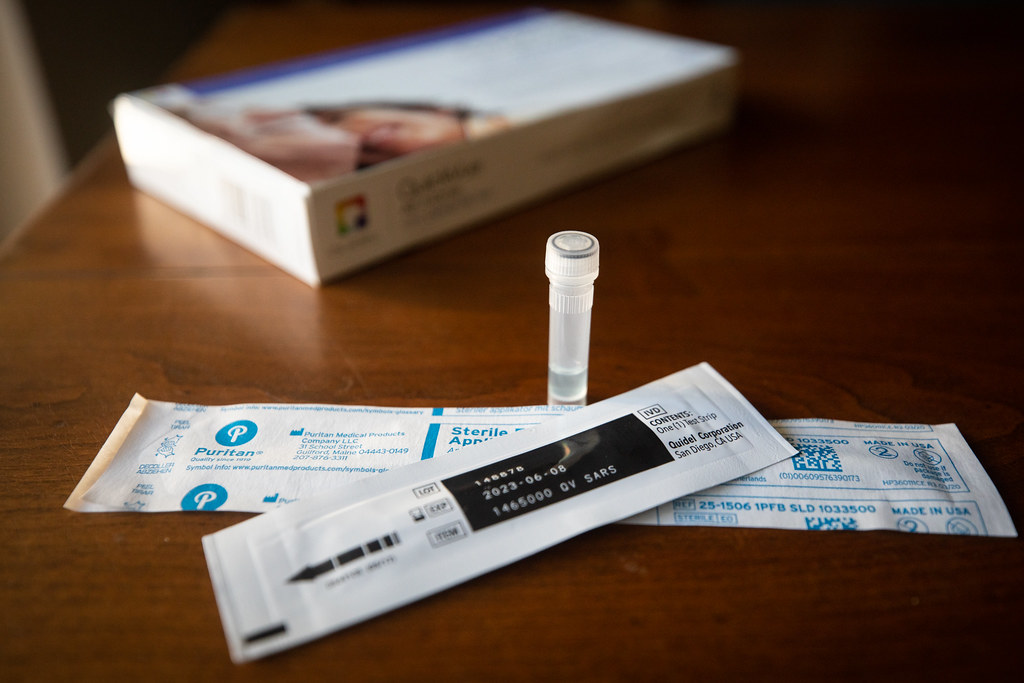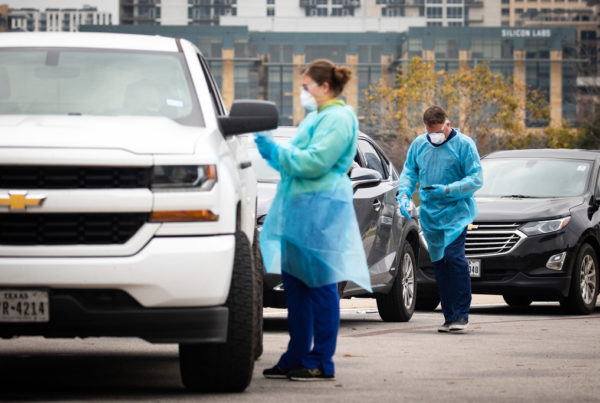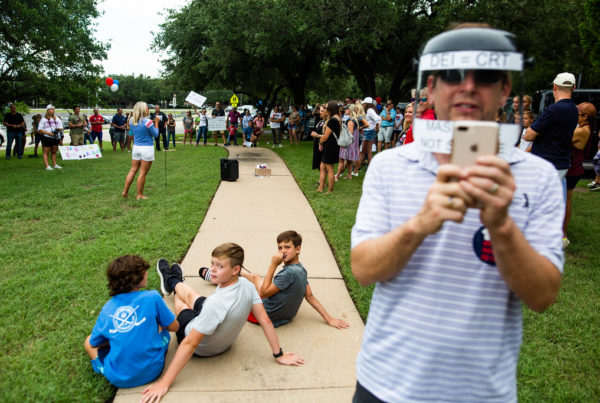The government began taking orders for free, at-home COVID-19 tests this week, making it likely that more people will be able to take a test soon, if they wish. But for those who are blind or visually impaired, having a test and being able to use it are not the same. That’s because taking an at-home COVID-19 test requires vision, and the ability to complete the process without touching the test strip.
Amanda Morris covers disability for the New York Times. She spoke to Texas Standard about why tests are not accessible, and what advocates say could be done to make it possible for blind people to complete them independently. Listen to the interview above or read the transcript below.
This transcript has been edited lightly for clarity:
Texas Standard: For listeners who haven’t taken one of these at-home COVID tests, could you say a little bit more about what’s involved? What parts of the process depend on being able to see?
Amanda Morris: The tests themselves are pretty complicated, and they require a lot of precise movements. I’ve taken a few of these tests myself and a lot of them require that you do not touch certain parts of the tests, such as the test strip, and a lot of them involve taking some form of liquid and dropping it into a tiny hole. And some of them say you have to drop six drops, and if you can’t see what you’re doing, it can be really hard to precisely measure out six drops into a tiny hole.
You write that many blind people simply haven’t gotten tested. Is that only because of inaccessible at-home tests or are there other reasons?
Even before home tests were widespread, testing sites were pretty inaccessible to blind people as well, because a lot of testing sites were set up to be drive-thru and blind people cannot drive. There are some walk-up options for tests, but that’s only really useful if you live in an area where you’re close enough to walk. A lot of blind people don’t live close enough to walk to a test site, and if they use other options like public transit or Ubers, or even having a friend or a neighbor drive them to the test site, that puts other people at risk for exposure. So a lot of people I’ve talked to you say that they’ve actually never been tested at all. And because of that, a lot of them are a little bit more isolated and staying home because they know that they can’t get tested if they get exposed.
The potential benefits here would be considerable if only the tests were more accessible. Now, I understand there are some workarounds that people with visual disabilities have used. Tell us about services like Be My Eyes and Aira. How do they help?
Those are both apps that pair a blind person with a sighted person who can describe their surroundings and can potentially walk them through a task and describe everything to them. But even those services can have drawbacks because they require somebody to have an iPhone and know how to use it. And a lot of blind people or people with limited vision tend to be older and may not be as technology savvy.
Additionally, some of them just may not have iPhones, and these services take away independence and privacy of health care information. A lot of blind people and advocates say that they should be the first to know, not somebody else.
You anticipated what I was thinking, that there would be privacy concerns, at the very least, right?
Yes. And we’ve seen this play out with other types of at-home medical tests, such as pregnancy tests. I heard stories from women who were blind, who had to rely on other people to get this really personal piece of information. And I mean, there was even this one story of a blind woman who used a friend to help her with a pregnancy test. And the result was negative, and the friend said, “Oh, well, that’s probably better off that way anyway.” And it was just this very hurtful moment for this person.
What do experts say could or should be done to make these test kits available to people who are blind?
One option is to make them more tactile. The Royal National Institute of Blind People in Britain came up with a prototype that can change chemical results on a strip into tactile results, so, raised bumps that blind people could feel. So that’s one option. There’s a prototype for this use on pregnancy tests that could be adapted for at-home COVID tests.
Other things that need to be done, advocates say, are to make instructions more accessible by providing audio formats or Braille instruction because right now, all the instructions are only on text, and it’s also about changing the instructions themselves. For blind people for that, there’s a guide on how to do it through touch. Right now, the instructions are written as if you can see everything. And then there’s other simple workarounds that could be done, such as placing some sort of plastic overlay on top of the test that could be touch to show where things are, or even things as simple as wearing a sterile glove that is provided with the test that might allow you to touch certain parts of the test.














